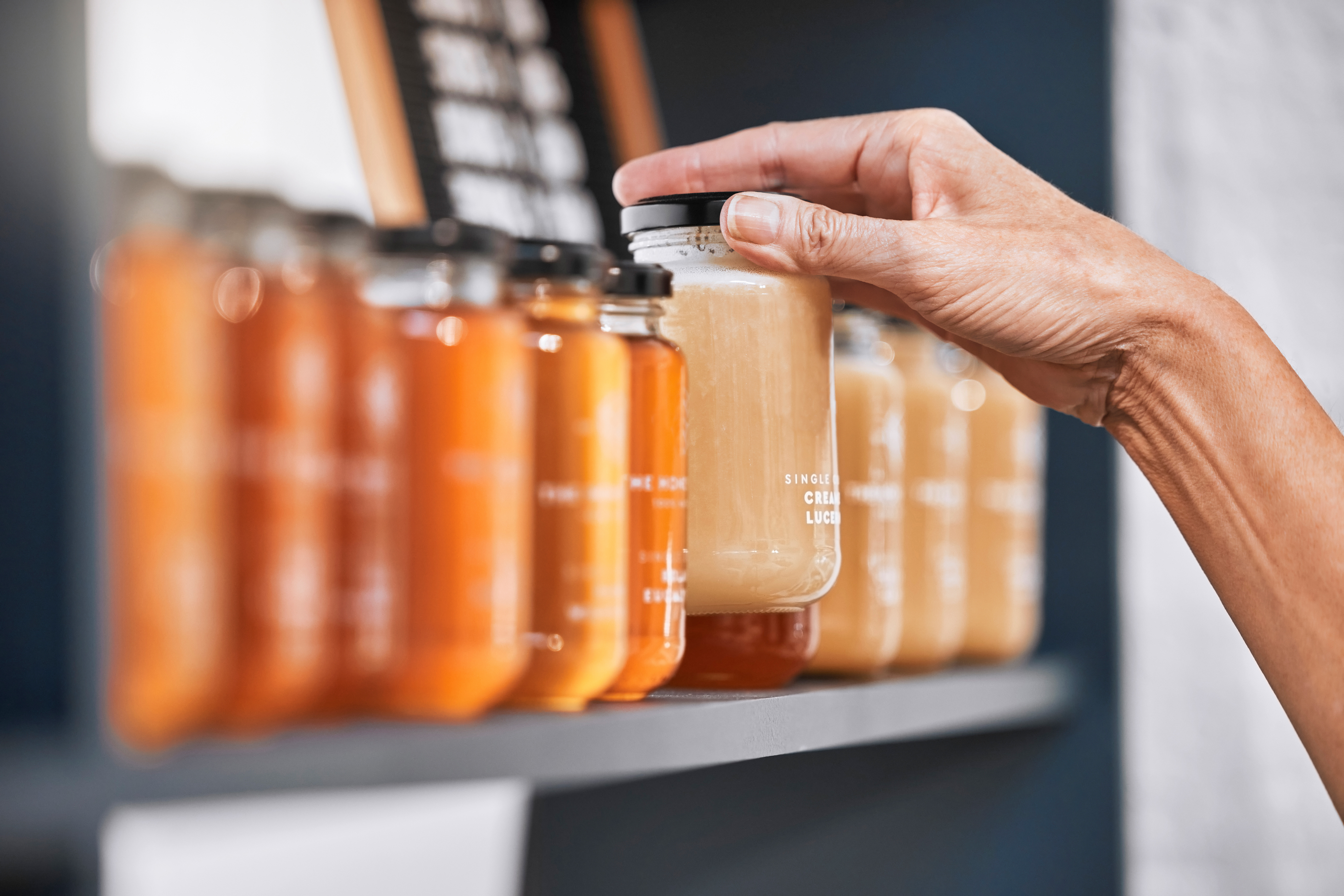Food Labelling Requirements: What does it mean?
If you’re looking closely, you might have noticed that the labelling on the food you buy has changed. Canadian requirements have recently been revised, and the participating businesses in the community are needing to follow suit to meet them.
But what does it all mean? We are here to help shed some light on this change and answer any questions you might have!
So, what exactly has changed?
You may notice something looking a bit different about the front packaging of the products you buy. That’s because a front-of-package nutrition symbol is now required for any food that is high in one or more of sodium, sugars, or saturated fats.
This symbol will appear on the top half of any product label, and in the top right corner if the product is wider than it is tall and it will always look the same, so it’s easy to find.
Providers in the food industry have until the beginning of 2026 to finalize all changes, but you may already be noticing some of these symbols popping up.
Why is this symbol being added?
Nutritionists have determined that eating foods high in sodium, sugars, and saturated fats is highly likely to lead to serious health risks. Things such as stroke, obesity, high blood pressure, heart disease, and even some types of cancers can be brought on due to a large intake of these foods.
This new system is designed to allow you to make a quicker decision with the proper information. It also gives support to health professionals in educating the public about these foods.
What’s exempt?
Some foods are exempt from the front-of-label requirement. Foods that are:
- Packaged as individual portions for commercial use.
- Milk or cream that’s sold in refillable glass containers.
- Any food that comes in minimal packaging.
- Food that has a protective effect on health, such as fruits and vegetables.
- Some dairy products.
- Raw single-ingredient ground meats.
- This one has been around for a while, but most food products in Canada must come with a Nutrition Facts Table. This table indicates the serving size, the number of calories in each, the number of the 12 nutrients in grams or milligrams, and the percentage of daily values.
The serving sizes on the table do not indicate how much you should eat; just how much you are getting per serving. When it comes to the percentage of daily values shown, this gives you insight into whether the product has little or a lot of a particular nutrient.
- 5% DV or less is a little.
- 15% DV or more is a lot.
Allergen labelling
It is crucial to ensure people with food allergies buy products with the proper knowledge of what’s in them. Any pre-packaged food product must come with a list of potential food allergens, any gluten, or added sulfites. Any protein sourced from peanuts, sesame seeds, wheat, eggs, milk, soybeans, crustaceans, or fish must be labelled.
Any food allergen, gluten source, or added sulfites means the product must have a statement indicating the source of the allergen or gluten present in the product.
What we eat is important!
As the world evolves and changes, so do the requirements for how information is delivered to the public. These are a few things to consider when packaging your products in the future. Meeting food requirements is essential to ensure that the people buying your products keep returning for more.

Flagstaff County is always proud of the big impact small businesses have in our community, and we want to ensure that you’re meeting every standard needed to succeed.


